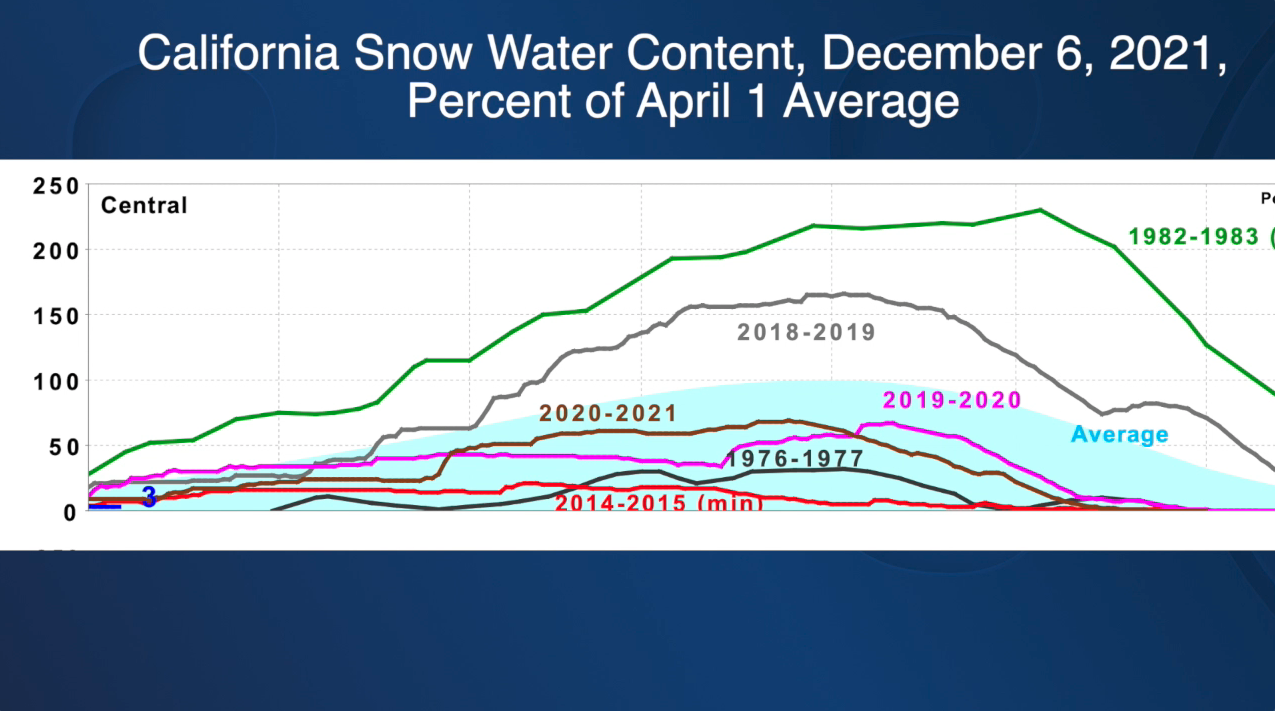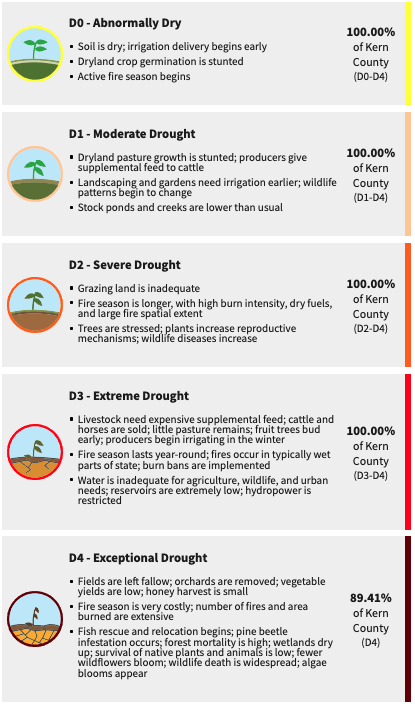BAKERSFIELD, Calif. (KERO) — As we enter the winter months during yet another dry year, experts are seeing a slower than normal start to snowfall. According to the National Oceanic and Atmospheric Administration (NOAA) this is the 15th driest year to date over the past 127 years.

A map from the California Data Exchange Center shows the snow water content for Central California. The current period is well below the average and even drops below last year's average.
This affects the state year-round. But it is still early and the National Weather Service (NWS) is hopeful for a good snow season.
"We still have a lot of winter left to go but right now, everything is trending in that lower-than-normal snowpack year and precipitation in general," explained Jerald Meadows, chief meteorologist at the National Weather Service.
Meadows noted that California weather is notoriously fickle but given the past couple of days which have been a bit colder, they are hopeful the lower temperatures and fog will allow them to catch up on snowfall closer to January.
"We are expecting to see a little bit more activity with winter storms. As we see the cold storms come in, there is going to be snowfall in the mountains, so there should be some for people to get up and see. It just not be as much as they are used to in previous years," added Meadows.
This is a cause for concern among area businesses that are at the mercy of Mother Nature. With skiing, tubing, and snow park attractions, one of those businesses is the Alta Sierra Ski Resort.
"We need a good amount of it, just to open. Even if we get a foot, we can’t open. We need two feet and then we gotta pack it and then put a nice little powder on top of that," said one of the owners, Garro Ellis. "But the good thing about our resort is that it is fairly clear so we don’t need like six feet of snow like other resorts."
Ellis adds not only does this affect them but other area businesses like rafting companies that depend on the water from snowfall. Not to mention the economy as a whole.
"From restaurants to hotels, to everything you come visit at a resort, even the cabins that are rented out there. They are losing out. They want us to open, everyone is cheering for us but it is just a matter of getting down to our knees and praying to God to send us a little snow."
At the moment they still don’t have an opening date as standing by for snowfall is one of the challenges they face.
"We have seen it come, we have seen it go, and we would love to just say 'okay we are going to plan to open on December 24th.' It is impossible to know that."
Ellis said they are all hoping that the opening date is sooner rather than later but the message right now is onward and upward.
And in response to California not having any snow, Meadows said it is too early to say right now, but they are also hopeful.
In the Central Valley residents are no strangers to drought. According to the NWS, as a result of last year's dry year, the water supply in reservoirs is now very low. Experts hope the snowfall this season will help replenish some of that supply, as a low snowpack does have several impacts.
There is not enough water for the trees and vegetation up in the Sierras to reproduce so makes it a lot more vulnerable to wildfires.
According to the California Department of Water Resources, as of April of this year, the snowpack was only 60 percent of its annual average. Meadows said the need for snow impacted this year's fire season with the loss of several giant trees.
23ABC IN-DEPTH
Where does Kern County stand when it comes to drought?
According to the numbers from NOAA, the entire population of nearly 840,000 people in Kern County is impacted by the drought.
A map gives a breakdown of the region, with nearly 90 percent of the county marked as D-4, or exceptional drought. The southeastern part of the county is marked as D-3, or extreme drought.

So what does D-4 mean?

- Farming fields are left inactive, with the hope to let the land recover and store valuable nutrients and retain moisture.
- Orchards can be removed, vegetation farming is reduced, and honey harvests come up short.
- Fire season is very costly based on the extent of those conditions.
- Fish rescue and relocation begins due to water drying up.
- And survival of native plants and animals is low, making death widespread.





